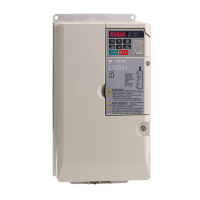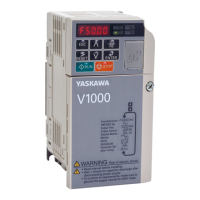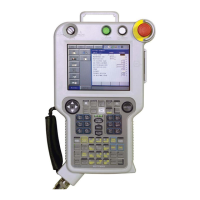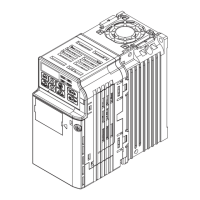6 Periodic Inspection & Maintenance
142 YASK AWA TOEPYAIL1E01A YASKAWA AC Drive L1000E Quick Start Guide
■ Recommended Periodic Inspection
Table 38 outlines the recommended periodic inspections for Yaskawa drive installations. Although periodic inspections
should generally be performed once a year, the drive may require more frequent inspection in harsh environments or with
rigorous use. Operating and environmental conditions, along with experience in each application, will determine the
actual inspection frequency for each installation. Periodic inspection will help to avoid premature deterioration in
performance or product failure. Copy this checklist and mark the “Checked” column after each inspection.
Periodic Inspection
WARNING! Electrical Shock Hazard. Do not inspect, connect, or disconnect any wiring while the power is on. Failure to comply can
result in serious personal injury. Before servicing the drive, disconnect all power to the equipment. The internal capacitor remains
charged even after the power supply is turned off. After shutting off the power, wait for at least the amount of time specified on the drive
before touching any components.
Table 38 Periodic Inspection Checklist
Inspection Area Inspection Points Corrective Action Checked
Main Circuit Periodic Inspection
General
• Inspect equipment for discoloration from
overheating or deterioration.
• Inspect for damaged or deformed parts.
• Replace damaged components as required.
• The drive has few serviceable parts and may
require complete drive replacement.
Inspect for dirt, foreign particles, or dust collection
on components.
• Inspect enclosure door seal if used.
• Remove foreign particles and dust by sucking
them out with a vacuum cleaner to avoid
touching parts.
• Replace components if cleaning is not possible.
Conductors and
Wiring
• Inspect wiring and connections for discoloration,
damage, or heat stress.
• Inspect wire insulation and shielding for wear.
Repair or replace damaged wiring.
Terminals
Inspect terminals for stripped, damaged, or loose
connections.
Tighten loose screws and replace damaged
screws or terminals.
Relays and
Contactors
• Inspect contactors and relays for excessive noise
during operation.
•Inspect coils for signs of overheating such as
melted or cracked insulation.
• Check coil voltage for overvoltage or
undervoltage conditions.
• Replace damaged removable relays contactors
or circuit board.
Braking Resistors
Inspect for discoloration of heat stress on or around
resistors.
• Minor discoloration may be acceptable.
• Check for loose connections if discoloration
exists.
Electrolytic
Capacitor
• Inspect for leaking, discoloration, or cracks.
• Check if the cap has come off, for any swelling, or
if the sides have burst open.
The drive has few serviceable parts and may
require complete drive replacement.
Diode, IGBT (Power
Transistor)
Inspect for dust or other foreign material collected on
the surface.
Remove foreign particles and dust by sucking
them out with a vacuum cleaner to avoid touching
parts.
Motor Periodic Inspection
Operation Check Check for increased vibration or abnormal noise.
Stop the motor and contact qualified maintenance
personnel as required.
Control Circuit Periodic Inspection
General
• Inspect terminals for stripped, damaged, or loose
connections.
• Make sure all terminals have been properly
tightened.
• Tighten loose screws and replace damaged
screws or terminals.
• If terminals are integral to a circuit board, then
board or drive replacement may be required.
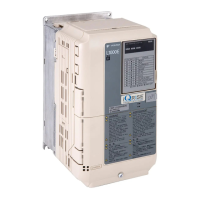
